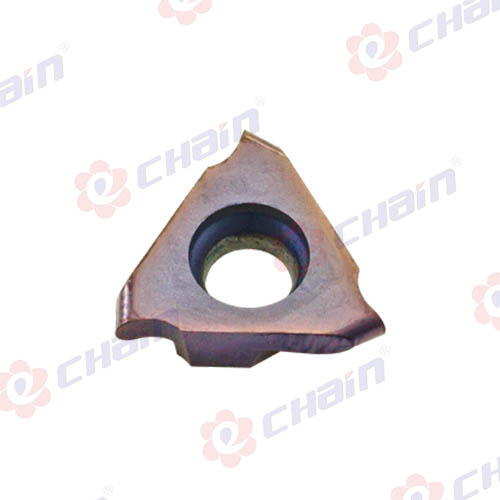Unveiling the Materials Behind Grooving Inserts: Impact on Performance in Machining
2024-03-19
Introduction:
In the realm of machining, the selection of cutting tools and inserts plays a critical role in achieving desired outcomes, including precision, efficiency, and tool life. Grooving inserts, specialized tools used for creating grooves in workpieces, are manufactured using a variety of materials, each with its own unique properties and performance characteristics. In this blog, we'll explore the common materials used to manufacture grooving inserts and how material selection impacts their performance in machining applications.
Common Materials for Grooving Inserts:
Several materials are commonly used in the manufacturing of grooving inserts, each chosen for its specific attributes and suitability for various machining tasks. Some of the most prevalent materials include:
1. Carbide: Carbide inserts, composed primarily of tungsten carbide particles bonded with cobalt, are renowned for their hardness, wear resistance, and thermal stability. Carbide inserts are well-suited for high-speed machining operations and are capable of maintaining sharp cutting edges even at elevated temperatures.
2. High-Speed Steel (HSS): High-speed steel inserts, made from alloyed steel with added elements such as tungsten, molybdenum, and chromium, offer good toughness, heat resistance, and versatility. HSS inserts are suitable for a wide range of machining applications and are often preferred for low to medium-speed operations.
3. Ceramics: Ceramic inserts, composed of materials such as alumina or silicon nitride, exhibit exceptional hardness, heat resistance, and chemical inertness. Ceramic inserts are ideal for high-speed machining of heat-resistant alloys and abrasive materials, offering extended tool life and superior surface finish.
4. Cermets: Cermets, hybrid materials combining ceramic and metal components, offer a balance of hardness, toughness, and wear resistance. Cermets are commonly used in grooving applications where high cutting speeds and feed rates are required, providing excellent performance in both roughing and finishing operations.
5. Diamond-Coated Inserts: Inserts coated with diamond or diamond-like carbon (DLC) coatings offer unparalleled hardness, wear resistance, and surface finish quality. Diamond-coated inserts excel in machining abrasive materials such as composites, hardened steels, and non-ferrous alloys, delivering superior performance and extended tool life.
Impact of Material Selection on Performance:
The choice of material for grooving inserts has a significant impact on their performance in machining applications. Some key factors to consider include:
- Wear Resistance: Materials with high hardness and wear resistance, such as carbide and ceramics, offer superior resistance to abrasion and adhesion during cutting, resulting in longer tool life and reduced tool wear.
- Heat Resistance: Materials capable of withstanding high temperatures, such as carbide and ceramics, maintain their cutting edge integrity at elevated temperatures, preventing premature tool failure and ensuring consistent performance in demanding machining environments.
- Toughness: Materials with good toughness, such as high-speed steel and cermets, are less prone to chipping or fracturing during machining, providing reliable performance and dimensional accuracy in a variety of cutting conditions.
- Surface Finish: The choice of material can impact the surface finish quality of machined components, with harder materials typically producing smoother surface finishes and reducing the need for secondary finishing operations.
Conclusion:
In conclusion, the selection of materials for grooving inserts is a critical consideration in achieving optimal performance and productivity in machining applications. Carbide, high-speed steel, ceramics, cermets, and diamond-coated inserts each offer unique advantages in terms of hardness, wear resistance, heat resistance, and toughness, allowing machinists to tailor their tooling solutions to specific machining requirements. By understanding the properties and performance characteristics of different materials, manufacturers can make informed decisions to maximize efficiency, tool life, and surface finish quality in grooving operations. As machining technologies continue to evolve, material innovations will play a crucial role in driving advancements in grooving insert design and performance.



